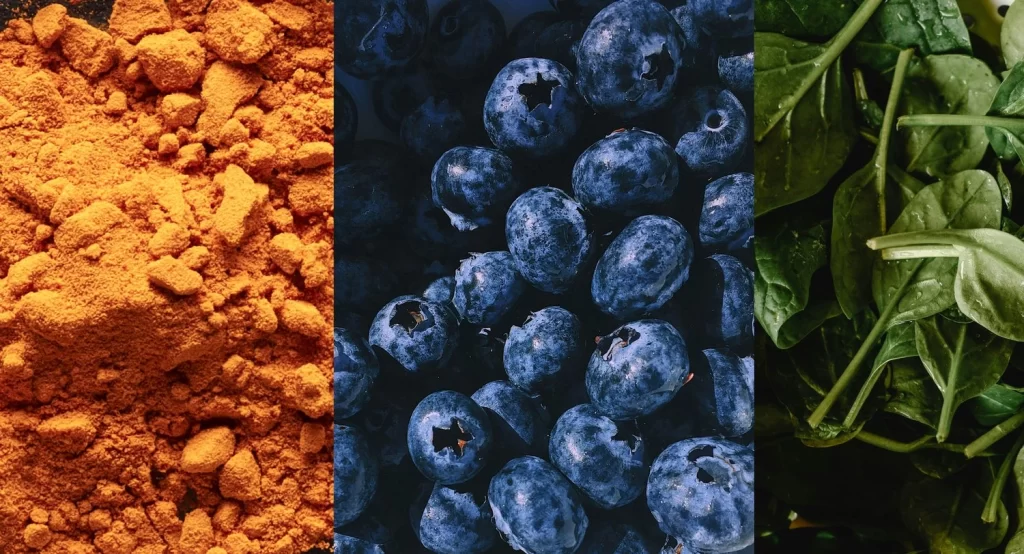The Anti-Inflammatory Diet: A Guide to Reducing Inflammation and Boosting Health

The anti-inflammatory diet can be super beneficial for pain relief and overall health, whether you choose to implement is fully, or take the bits you can commit to.
Chronic inflammation is a silent contributor to many health problems, from joint pain and autoimmune diseases to heart disease and even mental health conditions. The good news? The anti-inflammatory diet offers a natural, accessible way to combat inflammation and improve overall health. But what exactly is it, how does it work, and how can you incorporate it into your life? Let’s explore.
Why is the Anti-Inflammatory Diet Good for You?
Inflammation is a natural response of your immune system to injury or infection. However, when it becomes chronic, it can lead to various health problems. An anti-inflammatory diet focuses on foods that reduce inflammation and avoid those that exacerbate it.
Health Benefits of an Anti-Inflammatory Diet
-
Reduces Chronic Disease Risk: Lowers the likelihood of developing heart disease, diabetes, and certain cancers.
-
Improves Joint Health: Eases symptoms of arthritis and other inflammatory conditions.
-
Boosts Mental Well-Being: Emerging research suggests a link between inflammation and depression or anxiety.
-
Supports Gut Health: Encourages a healthy microbiome, reducing systemic inflammation.
How Does the Anti-Inflammatory Diet Work?
The diet is rich in nutrients and compounds that fight inflammation, such as antioxidants, omega-3 fatty acids, and polyphenols. At the same time, it minimizes processed foods, refined sugars, and unhealthy fats, which are known to promote inflammation.
Key Anti-Inflammatory Nutrients:
-
Omega-3 Fatty Acids: Found in fatty fish, flaxseeds, and walnuts, omega-3s reduce inflammation markers in the body.
-
Antioxidants: Present in berries, leafy greens, and nuts, antioxidants neutralize free radicals that contribute to inflammation.
-
Polyphenols: Compounds in foods like green tea, olive oil, and dark chocolate that have anti-inflammatory properties.
Big No-No’s in the Anti-Inflammatory Diet
While it’s important to know what to eat, it’s equally critical to understand what to avoid. These are the biggest offenders when it comes to promoting inflammation:

Foods like white bread, pastries, and sugary snacks cause spikes in blood sugar levels and trigger inflammatory responses.
1. Refined Carbohydrates
-
Foods like white bread, pastries, and sugary snacks cause spikes in blood sugar levels and trigger inflammatory responses.
-
A 2019 study in The American Journal of Clinical Nutrition linked high glycemic index foods to increased markers of inflammation.
2. Trans Fats
-
Found in fried foods, margarine, and processed snacks, trans fats are strongly associated with inflammation and heart disease.
-
The Journal of Nutrition (2021) confirmed that trans fat consumption significantly elevates inflammatory markers like CRP (C-reactive protein).
3. Processed Meats
-
Sausages, bacon, and deli meats contain preservatives and advanced glycation end products (AGEs), which promote inflammation.
-
Research published in Arthritis & Rheumatology (2020) found a strong correlation between processed meat consumption and worsening arthritis symptoms.
4. Excessive Alcohol
-
While moderate red wine can be beneficial, excessive alcohol disrupts gut health and promotes systemic inflammation.
5. Artificial Additives
-
Avoid foods with artificial sweeteners, preservatives, and coloring, as they can disrupt gut health and trigger inflammation.
Easy Ways to Implement an Anti-Inflammatory Diet
Switching to an anti-inflammatory diet doesn’t have to be complicated. Here are some simple tips:
1. Focus on Whole Foods
-
Prioritize fresh fruits, vegetables, whole grains, lean proteins, and healthy fats.
-
Avoid ultra-processed foods like chips, sugary cereals, and ready-made meals.
2. Incorporate Anti-Inflammatory Superfoods
-
Fatty Fish: Salmon, mackerel, and sardines are rich in omega-3s.
-
Leafy Greens: Spinach, kale, and collard greens are loaded with antioxidants.
-
Berries: Blueberries, strawberries, and blackberries are antioxidant powerhouses.
-
Turmeric: This spice contains curcumin, a potent anti-inflammatory compound.
3. Choose Healthy Fats
-
Replace butter with olive oil or avocado oil.
-
Snack on nuts and seeds instead of processed crackers.
4. Drink Smart
-
Swap sugary sodas for green tea or water with a splash of lemon.
-
If booze is a must here and there, enjoy a glass of red wine in moderation.
5. Meal Prep for Success
-
Prepare meals in advance to avoid reaching for unhealthy options when you’re busy.
-
Stock your pantry with anti-inflammatory staples like quinoa, canned beans, and spices.
How Long Does It Take to See Results?
Results depend on your starting point and consistency, but many people notice improvements in as little as two weeks. Common benefits include reduced joint pain, improved digestion, and better energy levels. Long-term adherence to the diet can significantly lower chronic disease risk and enhance overall well-being.
The Bottom Line
The anti-inflammatory diet is more than just a way of eating—it’s a lifestyle that promotes long-term health and vitality. By focusing on nutrient-rich, whole foods and minimizing inflammatory triggers, you can take control of your health naturally. Start small, incorporating one or two changes at a time, and enjoy the benefits of reduced inflammation and a better quality of life.

